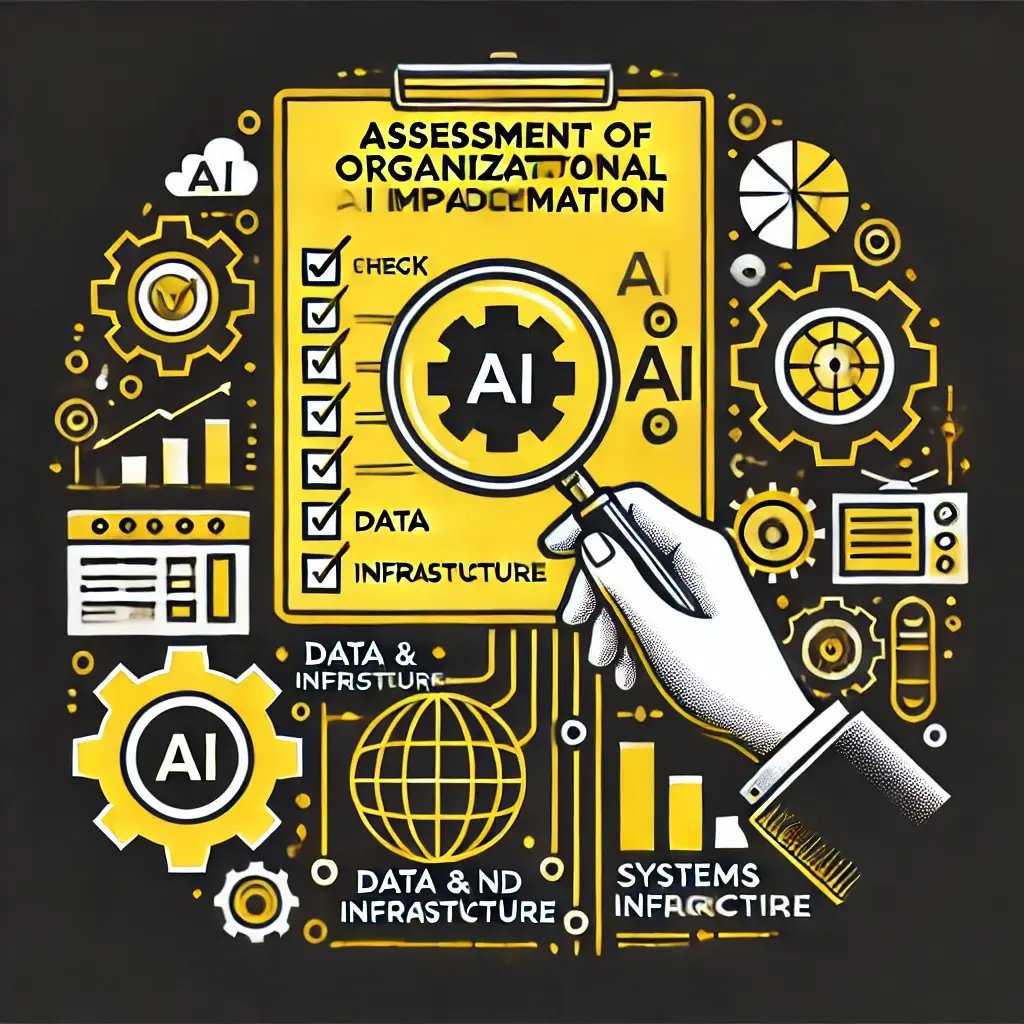
How to Start Implementing AI in Your Company
As a business owner or someone driving innovation within your company, you’ve likely heard how Artificial Intelligence (AI) can revolutionize industries. But how do you turn that potential into practical results for your organization? Implementing AI is not just about adopting the latest technology—it’s about solving real problems, optimizing operations, and creating value for your business. Here’s how you can get started.

Focus on What Matters: Your Business Goals
AI should solve a specific problem or enhance an existing process in your company. Start by asking:
- What challenges does your business face?
- Where can AI help improve efficiency, accuracy, or customer satisfaction?
For example:
- Customer Support: Use AI-driven chatbots to respond to queries 24/7.
- Operations: Automate repetitive tasks like invoice processing or inventory management.
- Sales and Marketing: Personalize customer outreach or analyze buying patterns.
Pick one or two areas where the impact would be immediate and measurable.
Assess If Your Business Is Ready for AI
Before jumping into AI, ensure your company has the right foundation:
- Data: Do you have the necessary data to train AI models? Is it organized and accessible?
- Technology: Does your current IT infrastructure support AI implementation?
- People: Do you have team members with expertise in AI, data science, or machine learning—or a plan to bring in external help?
If you’re not sure where to begin, a small investment in consulting services can help assess your readiness and identify gaps.


Start Small with a Pilot Project
AI should solve a specific problem or enhance an existing process in your company. Start by asking:
- What challenges does your business face?
- Where can AI help improve efficiency, accuracy, or customer satisfaction?
For example:
- Customer Support: Use AI-driven chatbots to respond to queries 24/7.
- Operations: Automate repetitive tasks like invoice processing or inventory management.
- Sales and Marketing: Personalize customer outreach or analyze buying patterns.
Pick one or two areas where the impact would be immediate and measurable.
Simple and easy to use
AI doesn’t need to be rolled out across your entire company on day one. Test the waters with a pilot project.
- Choose a single process or department where AI can create a quick win.
- Set clear goals, such as reducing costs by 10% or increasing productivity by 20%.
- Monitor results and gather insights before scaling up.
For example, you might start by automating customer service emails or using AI tools to analyze sales trends.

Leverage AI Tools You Already Have Access To
AI doesn’t have to mean hiring a team of data scientists or building complex systems from scratch. Many tools your company already uses likely have AI features. For instance:
- CRM and Marketing: Platforms like HubSpot or Salesforce use AI to predict customer behavior.
- Finance: Tools like QuickBooks or Xero offer AI for forecasting cash flow.
- Operations: Many cloud platforms, such as Microsoft Azure or Google Cloud, provide AI solutions for business use cases.
Investing in these tools allows you to harness AI without overhauling your entire tech stack.
Ensure Your Data Strategy Is Solid
AI is only as good as the data it works with. If your company’s data is incomplete or scattered, AI won’t deliver the results you expect.
- Centralize your data: Bring all your customer, operational, and financial data into a unified system.
- Clean your data: Remove duplicates, fill in gaps, and ensure accuracy.
- Protect your data: Set policies to ensure compliance with privacy regulations like GDPR or CCPA.


Focus on What Matters: Your Business Goals
AI should solve a specific problem or enhance an existing process in your company. Start by asking:
- What challenges does your business face?
- Where can AI help improve efficiency, accuracy, or customer satisfaction?
For example:
- Customer Support: Use AI-driven chatbots to respond to queries 24/7.
- Operations: Automate repetitive tasks like invoice processing or inventory management.
- Sales and Marketing: Personalize customer outreach or analyze buying patterns.
Pick one or two areas where the impact would be immediate and measurable.
Prepare Your Team for the Change
AI may require new ways of working, and it’s crucial to bring your team along on the journey.
- Explain the benefits of AI clearly: how it will help them work smarter, not harder.
- Provide training so employees can use AI tools effectively.
- Address concerns about job security and highlight how AI can enhance roles rather than replace them.
Building employee buy-in from the start will make AI adoption smoother and more successful.


Monitor, Evaluate, and Expand
Once your pilot project is up and running, take the time to evaluate its success.
- Did it meet your goals?
- What lessons did you learn?
- How can the approach be refined before expanding to other areas of the business?
Use this feedback to scale AI where it will have the biggest impact, whether that’s in operations, sales, or customer service.
Stay Ethical and Transparent
AI decisions can significantly impact customers and employees. Make sure your implementation aligns with your company’s values.
- Avoid biases in data or algorithms that could lead to unfair outcomes.
- Be transparent about how AI is being used and the data it processes.
- Comply with legal and ethical standards to build trust with stakeholders.


Foster a Culture of Innovation
For AI to succeed, your company needs to embrace innovation. Encourage your team to think creatively about how AI can help them. Create a culture where experimentation is valued and failure is seen as a stepping stone to success.
The Bottom Line
AI is a game-changer, but it’s not a one-size-fits-all solution. By starting small, focusing on specific business goals, and involving your team, you can gradually integrate AI into your company and unlock its full potential. Whether you’re looking to improve efficiency, drive growth, or deliver better customer experiences, the key is to take the first step—and then keep building from there.
It’s not about catching up with the competition; it’s about staying ahead of the curve.
Discover the Power of AI
Explore how Artificial Intelligence can transform your business in our latest article. From defining goals to fostering innovation, learn practical steps to implement AI effectively and drive your company into the future. Dive into the details below!


